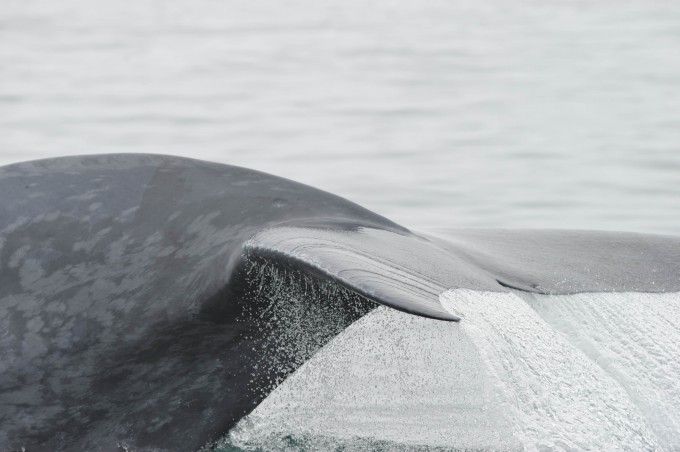We are proud to note that our very own Ari Friedlaender wrote a great blog for the Smithsonian’s Ocean Hall on our recent paper lead by Jeremy Goldbogen on feeding mechanics in blue whales <see: https://sea-inc.net/2012/12/06/new-paper-on-blue-whale-feeding-behavior/>.
The text is below and you can find it online at <http://ocean.si.edu/blog/acrobatic-blue-whales-do-twist-while-feeding>

I have a vivid childhood memory of sitting under the Blue Whale model hanging in the Natural History Museum, eating an ice cream and wondering how in the world did that whale get so big! Over the past several years a group of researchers have been asking similar questions about just how do whales get so big and how do they eat.
Using small, state-of-the-art suction-cup tags and new visualization tools we can now understand the underwater movements of these ocean giants and how they are able to feed on dense patches of prey to consume up to 1 ton of food a day! Blue whales are in a family of whales that have evolved comb-like baleen and large mouths to gulp huge volumes of prey-rich water and then sieve out the small crustaceans or fish that are their main food source.
What we recently found out was that blue whales, the largest animal to have ever lived on planet Earth, sometimes feed by conducting 360° rolls when they open up their cavernous mouths and lunge into an unsuspecting patch of krill. We found that as the whale approaches the prey patch, it rolls over 180°, on to its back, lunges with mouth agape, and then continues to complete the full roll as it closes its mouth full of prey-laden water. This maneuver is powered by several powerful fluke strokes and tilting its pectoral flippers to help guide the whale through this energetically costly and acrobatic maneuver.
We think that this behavior improves the whales’ chances of engulfing the most krill as possible in a single gulp. Krill, small crustaceans like shrimp, have evolved ways to try and escape from predators when they can see them coming, and blue whales are easier to see than anything else in the ocean given their enormous size. However, if the blue whale feeds from coming up from below the krill where it is dark, they may be able to avoid being detected until the last moment when krill cannot avoid them. The rolling behavior we observed is likely part of an ambush strategy to feed directly from below the krill. The rolling half way over before opening the mouth likely helps to maximize the amount of krill the whale can consume at once.
By coming up from below the krill patch, the whale is also taking advantage of counter-shading, and can see the size and shape of the krill patch as it approaches. The rolling behavior helps the whale because their eyes are on the sides of its head and rolling would allow the whale to see the patch with both eyes and help make its ambush approach as accurate as possible.
While we have not observed such dramatic rolling maneuvers by other baleen whales, we still know very little about how these ocean giants feed and we expect to keep researching these incredible animals to learn new and valuable information on how they live. One thing is for sure, whales are big because they are really good at what they do!
